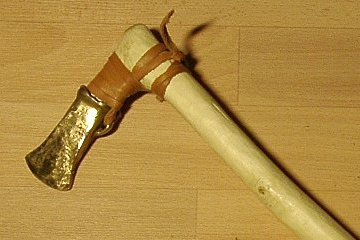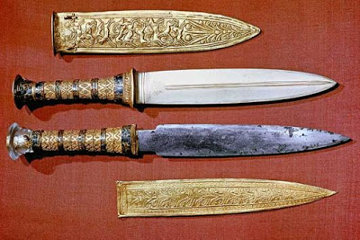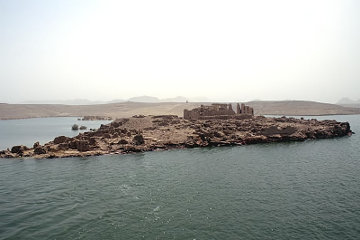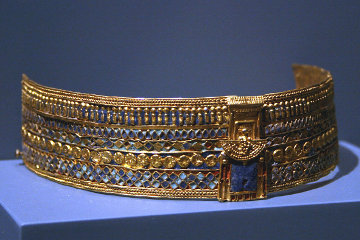The Birmingham of Africa
| el-Kurru | 18 24 33.05N 31 46 15.86E | The remains of a pyramid and several tombs can be seen. Both Kashta, the first pharaoh of the Twenty-fifth Dynasty, and Tantamani, the last pharaoh of that dynasty, are buried here. |
| Nuri (Napata) | 18 32 16.90N 31 49 20.37E | The pyramids sit isolated in the desert. Just to the east is the towering bulk of Jebel Barkal with the famous Temple of Amon at its foot. |
| Meroe | 16 56 18.23N 33 44 55.81E | There are two lines of pyramids at Meroe and hundreds of other tombs dot the landscape. |
According to conventional thinking, Iron Age I is the start of the Israelite period in Palestine. (The fact that there is no evidence for an Exodus from Egypt nor an invasion of Canaan at that time is an inconvenient anomaly which merely proves the unreliability of the Bible.) One reason for this belief is the numerous references to iron in the books of Joshua and Judges: the Israelites complained that their enemies were equipped with "iron chariots", Og, King of Bashan, was reported to possess an iron bed, and it was forbidden to use any iron tool on the stones that made up the Lord's altar, and so on.
What most people fail to realise is that these references to iron emphasise just how scarce a material it was. Only the richest of kings could afford the incredible luxury of an iron bed - and the fact that Og had one was worthy of mention!
Like all new and expensive technological developments, it was the military which first made use of iron - the iron chariots and Goliath's iron spear-head. In fact, the military association with iron was so strong that the law of God stated that if a person was killed with an iron tool or weapon, the death was to be regarded as murder! (Numbers 35:16)

| |
| This modern reconstruction of a Bronze Age axe shows how leather thongs were used to hold the head to the shaft. |
In those days an axe head was held to the axe shaft with leather thongs and a careless attitude to maintenance meant that it was quite possible for a lusty blow to cause the thongs to tear and send the axe head flying. If someone was killed by such an accident the killer had to flee to the nearest City of Refuge, where he was protected from the blood feud avenger. Iron axe heads were too expensive to be used for mere wood chopping, so if the instrument of death was found to be iron, it could be safely assumed that the offender had taken a weapon rather than a tool and lain in wait for the dead man.
Here at Digging Up the Paste we believe that the Exodus took place at the close of the Early Bronze Age and the widespread disruption of Middle Bronze I was the invasion by the Israelites. The conventional dates for the Bronze Ages are:
| Early Bronze | 3300-2100 BC |
| Middle Bronze | 2100-1550 BC |
| Late Bronze | 1550-1200 BC |
Is it feasible that enough iron could be around at the start of Middle Bronze to equip squadrons of "iron chariots"?
The earliest iron objects known are beads found in Egypt which date to 3,500 BC, but their high nickel content makes it almost certain that the iron is from meteorites. The earliest iron objects, other than beads, made by the Egyptians date to 2,500 BC, which is comfortably within the Early Bronze Age. There are samples of smelted iron from Mesopotamia and northern Syria which date to between 3,000 and 2,700 BC, which is again in the Early Bronze period.
Was there enough of this iron to make "iron chariots"? It all depends on what is meant by an "iron chariot"; it is most unlikely that the entire chariot was made of iron. The sort of high quality steel required to make a chariot light enough to be feasible was simply not available at that early period. Indeed, some have argued that this early iron had such a high carbon content that it was less reliable than bronze weapons because of its tendency to shatter.

| |
| Two daggers from Tutankhamun's tomb. The lower is made of meteorite iron. |
The great advantage of iron over copper or bronze is that it is harder and therefore keeps an edge and withstands wear better. Iron axles would be better than either wood or bronze (so long as the problem of breakage could be managed, which might be done by using stub axles rather than full width ones. In addition, although iron swords might shatter, iron spear-heads would not be subject to the same stresses and the advantage of remaining sharp longer would be very persuasive.
Even in the Late Bronze iron was still suffiently rare that Tutankhamun was buried with two iron daggers on his mummy. I believe that they were made of meteorite iron, which may have given them religious significance as well as being a sign of ostentation.
Of course the introduction of iron had widespread effects, not least on the trade routes of the ancient world. So long as bronze remained king countries like Cyprus, with its extensive copper mines, were central to international commerce. Even far-off Cornwall was reached by Phoenician traders because of its tin, a vital ingredient of bronze.
Iron, however, came from other areas. The Hittites, in northern Anatolia, began to smelt iron from ore around 1500 BC, but seven centuries later a rather surprising centre of the iron industry emerged - the civilisation of Meroe in what is now the Sudan. There is wide-spread evidence for the production of bloom iron and it has even been suggested that the people of Meroe invented a primitive form of blast furnace - where high carbon iron is exposed to oxygen to reduce the carbon content. So much iron was produced that some have called Meroe "the Birmingham of Africa"!
Iron from Meroe has been found in many parts of Africa, but most of the iron was probably shipped north along the Nile river, both because of high demand in the Mediterranean world and because of the ease of movement along the river. Meroe grew rich because of its industry and at one time controlled a kingdom stretching 600 miles from north to south.
Despite their technological skill, however, it seems that the people of Meroe would rather loot wealth than earn it. The Egyptians had long regarded "wretched Cush" or Nubia as one of the "Nine Bows", the hereditary enemies of Egypt and built strong fortresses at Uronati, Buhen and other places to keep raiders out. The high point for Meroe came around 760 BC when Kashta of Napata raided into Egypt and found that the weak rulers of the Third Intermediate Period were easily conquered. Perhaps to his surprise, he was soon in possession of the whole of Egypt and took the throne name of Maatre.

| |
| Some of the pyramids at Meroe from the air. At least fifty royal pyramids are known. |
These Kushite rulers of the Twenty-fifth Dynasty adopted the culture of their new land with enthusiasm. Once again pyramids were constructed as the burial places for the pharaohs, though there were some curious results. For example, at el-Kurru the pyramid and necropolis were certainly on the west bank of the Nile, as tradition demanded, but at this point the Nile flows more or less south and if you had walked downstream along the river far enough you would find yourself on the east bank at Thebes!
Once they had consolidated their hold on Egypt, however, these Nubian pharaohs had to look elsewhere for the excitement of raid and plunder and the obvious direction was still further north into Palestine. Pharaoh Taharqa, in particular, meddled in Palestinian affairs, as recorded in the Bible.
Now Sennacherib received a report that Tirhakah, the king of Cush, was marching out to fight against him.
2 Kings 19:9
This interference so angered the Assyrians, who regarded Palestine as their own sphere of influence, that Esarhaddon invaded Egypt in 671 BC and drove Taharqa out of the country and back south to Nubia. Unwilling to over-extend himself, Esarhaddon then appointed native Egyptians as governors and returned home.
The experiment was not a success and two years later Tarharqa returned and recovered Egypt as far as Memphis. Esarhaddon set out to expel him once more, but died at Harran. Ashurbanipal, his successor, dispatched a general and a corps of elite soldiers who, with Egyptian help, quickly drove Taharqa back south again, this time for good.
Tarharqa died in 667 BC and his son, Tantamani, once more invaded Egypt and captured Thebes. The Assyrians had maintained a presence in the north and they reacted violently, sending a large army south to drive the Nubians out. In the process Thebes was so thoroughly sacked and destroyed that it never really recovered.
This time Meroe seemed to have learned its lesson and there were no more invasions, though doubtless there were constant raids and skirmishes along the border with Egypt. These gradually grew in strength and when Egypt was thrown into chaos by the death of Cleopatra the people of Meroe sensed an opportunity and once more there are reports of raids and skirmishes from Nubia northwards. In 25 BC the Roman governor, Publius Petronius, responded to a raid in which thousands of Egyptians were carried off into slavery from the area around Aswan and Thebes by invading Nubia with ten thousand men. He reached the Nubian capital, which by then was back at Napata, and razed the city to the ground.

| |
| Thanks to its hilltop location, the Roman fortress of Qasr Ibrim has survived the flooding of Lake Nasser. |
The Nubian queen, Amanirenas, who bore the title Candace, was eager for revenge and three years later sent her army north again to attack Qasr Ibrim, the strongest fort in the entire Nile Valley, constructed by Roman engineers as the gateway to Egypt. Petronius heard of these plans and managed to reach Qasr Ibrim before the Nubians. The ensuing battle was a defeat for the Nubians, who accepted the status of "client state" and from then on kept the peace.
It has been suggested that the eventual decline of Meroe in the fourth century AD may have been due to the collapse of its trade in iron. The reasons for this collapse are not known, but given the importance of iron I think it is highly unlikely that demand for the metal declined. A more likely cause, in my opinion, is deforestation.
The Wealden Iron Research Group has experimented with its version of a Roman era "bloomery" and found that copious quantities of wood are required to preheat the furnace and then in the form of charcoal, both to produce heat and to provide the necessary carbon for the smelting process. It was not until the 18th century that the secret of making iron using coal was discovered in England, so the iron industry in Meroe must have resulted in widespread deforestation.
It is ironic to think that iron, the source of Meroe's wealth, was also the cause of its desertification. The meagre forests were cleared and the land left to the natural forces of wind and heat to produce the barren landscapes that we see today along the Nile. All that remains of this once remarkable culture are its pyramids and temples.
The pyramids of Meroe range from 20' to 100' in height and are remarkable for their steep sides. Unfortunately most of them have flat tops, not because they were designed that way but because of the activities of an Italian adventurer, Giuesppe Ferlini, who came here in 1834 and investigated the site. For reasons that are unclear he decided that the best way to do this was to pack the pyramids with gunpowder and strike a match. One can but hope that he is now in a place a good deal hotter than the Sudan!

| |
| A bracelet from the tomb of Candace Amanishakheto, discovered by Giuseppe Ferlini and now in the Egyptian Museum, Berlin |
The Sudanese government, with its eyes on the tourist wealth that has so enriched Egypt, would love to use Meroe and its sister sites as tourist attractions. Unfortunately they seem not to have grasped the idea that tourists are, on the whole, averse to visiting countries where violence and injustice prevail. Slave-raiding into Darfur carries on the Nubian tradition of violent incursions into its neighbours and the recent sentence of death passed on a Christian woman because of her religion - fortunately world-wide condemnation did eventually lead to her release - as well as the war against the Christians and animists of south Sudan, do not encourage Westerners to visit.
bloom iron When iron ore is put in a furnace and heated to 750-800°C it produces a "bloom" of mixed spongy iron and slag. This has to be heated red hot and pounded with hammers to work out the slag and consolidate the crystals of iron to produce wrought iron. Return
reduce the carbon content Iron which has too high a carbon content is so hard that it cannot be worked. By introducing oxygen into the iron the carbon content is reduced and pig iron is produced, which is more malleable but also hard enough to be useful for tools and weapons. Return
Candace Curiously, the Biblical book of Acts records that the deacon Philip met the treasurer of Queen Candace of Ethiopia and converted him. (Acts 8:27) While we have no information about a Queen Candace in Ethiopia proper at this period, Cush and Ethiopia were frequently regarded as the same country by ancient writers and it is possible that the "Ethiopian Eunuch" was, in fact, from Meroe or Napata and instead of introducing Christianity into Ethiopia actually brought it to Nubia. This would accord with the historical fact that Ethiopia and its rulers became Christian due to the efforts of Frumentius around AD 331. Return
Giuseppe Ferlini The wretched fellow was searching for treasure and actually found some in the pyramid of Candace Amanishakheto, a discovery which prompted him to more or less destroy the pyramid, no. 6 at Meroe. It is pleasing to report that no one believed that such remarkable jewellery could possibly have been made in the savage Sudan and his attempts to sell the jewellery were turned down by museum after museum. Finally - and somewhat grudgingly - the museum in Berlin bought some of the objects and a museum in Munich bought the rest but the bidding war, which he hoped would bring him great wealth, never developed. Return
© Kendall K. Down 2015





